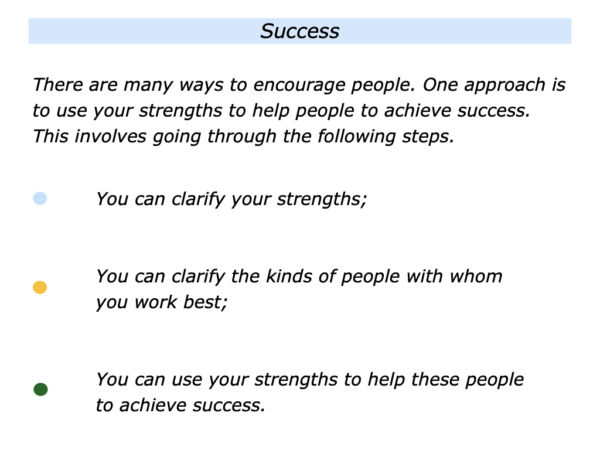
There are many ways to encourage people. One approach is to use your strengths to help people to achieve their picture of success. There many ways to follow this approach.
Bearing in mind your strengths, you may be
able to help people by doing superb work as a:
Medic … Teacher … Counsellor … Writer … Sports Coach … Mentor … Craft Worker … Creative Artist … Scientist … Crisis Manager … Team Leader … Coordinator … Thought Leader … Film maker … Or In Another Role.
Imagine that you want to elements of this approach in your own way. If appropriate, you can focus on the following steps.
You Can Clarify Your Strengths
You may be good at counselling, making furniture, nursing, coaching a sport or developing software. You may be good at managing crises, leading certain kinds of teams or doing another activity.
How to clarify your strengths? One approach is to explore the following questions.
Clarifying My Strengths
What are the deeply satisfying activities in which I deliver As rather than Bs or Cs? What are the activities that give me positive energy? When do I feel in my element – at ease and yet able to excel?
What are the situations in which I see the destination quickly? When do I go ‘A, B … and then leap to … Z’? What are the activities in which I am a good finisher and have a track record of delivering Z?
What are the situations in which I see patterns quickly? Where do I have good personal radar – I seem to know what will happen before it happens? Where do I always do the basics and then add the brilliance?
Imagine that you have clarified some of your strengths. Bearing in mind what you do well, what are the specific things you can offer that could help people to achieve success?
Much depends, of course, on the specific activity where you can do superb work. Bearing in mind your strengths, it can be useful to explore the following question.
What are the specific things I can offer to help people – individuals, customers, teams or organisations – to tackle their challenges or achieve their goals?
If you wish, try tackling the exercise on this theme. This invites you to complete the following sentence.
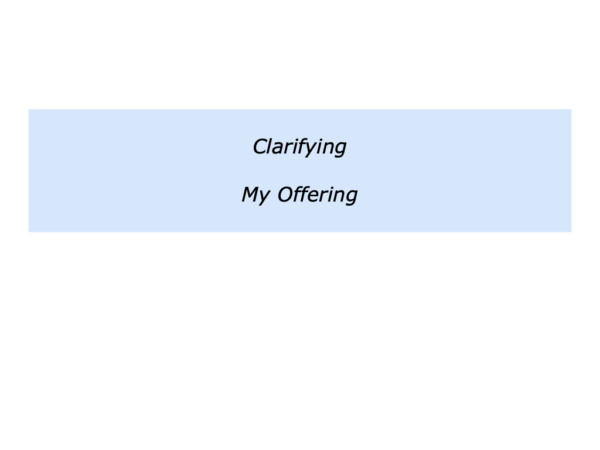
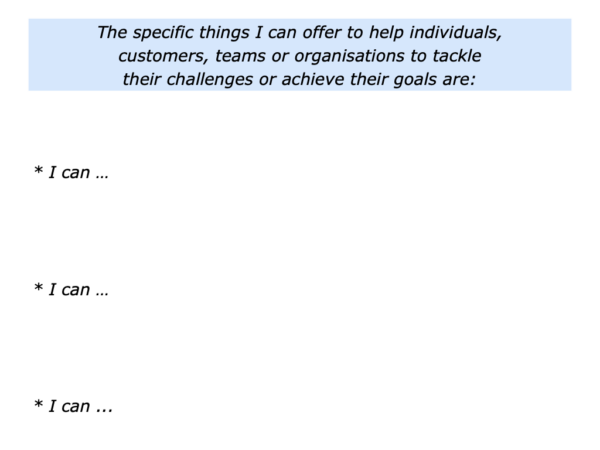
You Can Clarify The Kinds Of
People With Whom You Work Best
The next step is to clarify the kinds of people with whom you work best. There are some kinds of work – such as medical care – where you need to help many different kinds of people.
Bearing this in mind, however, it can be useful to explore the characteristics of people with whom you work best and who may be open to what you offer. This can also highlight those who are more challenging.
Great workers position what they offer in a way that is attractive to their potential target audience. This increases the chances of planting seeds in the fertile ground rather than frozen ground. One approach is to ask yourself the following questions.
Working With Individuals
Who are kinds of people with whom I work best? What are the characteristics of these people? When have I done good work with such people?
What are the challenges such people face – both now and in the future? What may be the goals they want to achieve? What are the specific things I can offer that can help them to achieve success?
Working With Organisations
Who are the kinds of customers, managers, team or organisations with whom I work best? What are the characteristics of these groups of people? When have I done good work with them?
What are the challenges some of these may face – both now and in the future? What may be their goals? What are the specific things I can offer that can help them to achieve success?
If you wish, try tackling the exercise on this theme. This invites you to complete the following sentences.
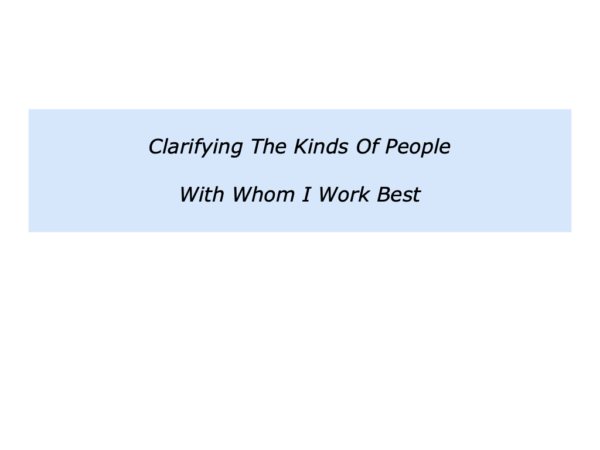
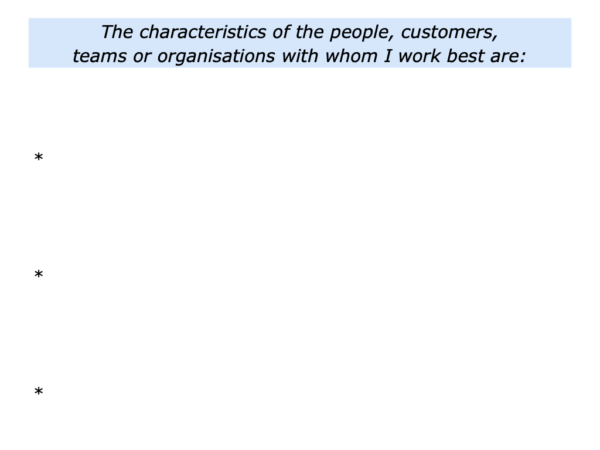
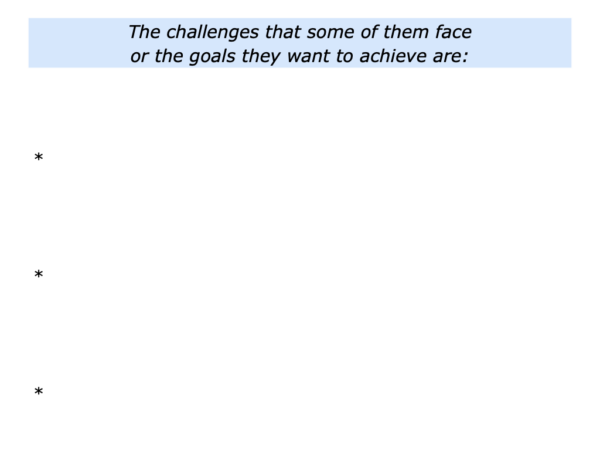
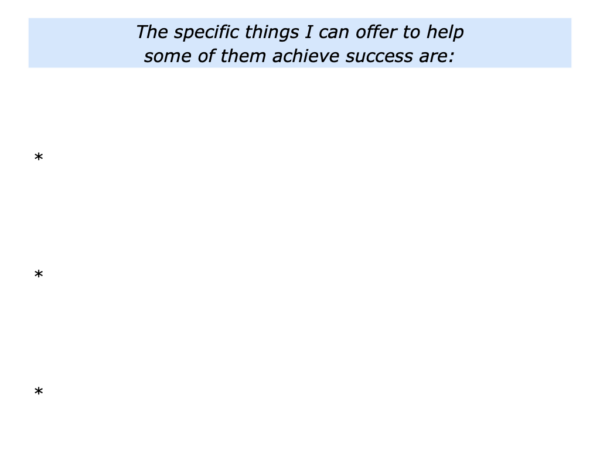
You Can Clarify The Steps You Can
Take To Help People To Achieve Success
Imagine that you have clarified: a) the kinds of people with whom you work best; b) the specific things you can offer them. The next step is to help people to tackle challenges and achieve success.
A counsellor may help a person to take control of their life. A carpenter may produce bespoke furniture that delights customers. A marketer may run a campaign that increases sales.
A medical specialist may help a person to regain their health. A mediator may help people to solve a conflict. A project director may build a successful prototype that helps a company to shape a positive future.
Great workers believe it is important to get out there and work. Bearing this in mind, here are some steps you may consider to find work and help people to succeed.
You can focus on the
people in your network
Many people find that their work comes from either: a) the people they have worked with in the past: b) the recommendations that these people make to others in their network.
Great workers sometimes find a way to keep in touch with people in their network. They may, for example, send them articles, materials or ideas that these people may find interesting.
Such workers do, when appropriate, find a way to have a conversation with potential customers. They then aim to act as a trusted advisor rather than doing a hard sell.
Before having such a conversation, they research what may be happening in that person’s world. They aim to clarify:
The challenges the person may face in their team, organisation or market;
The knowledge, positive models and practical tools that they could pass on to help the person succeed.
During the conversation they aim to help the person to feel at ease and able to explore. At an appropriate point, they may ask about the kinds of challenges that the person may face.
Following the trusted advisor approach, they then ask if it is okay to share some ideas. If so, they try to pass on knowledge that resonates with the person and can help them to achieve their goals.
Much then depends on the potential customer’s reactions. These may include the following kinds of responses.
They may simply listen and process the ideas in their own way;
They may thank them for the ideas and say they may get back to them;
They may show an interest in the ideas and say something along the lines of: “How can we take this further?”
Imagine that you have followed this approach in your own way and, as a result, have got a piece of work. You can then move on to the next step.
You can make clear
working contracts
Clear contracting is vital in many areas of life. This is especially so when providing services or products. It can therefore be useful to make clear working contracts with the person, team or organisation about the following things:
The specific results to achieve – the picture of success;
The specific responsibilities of the various parties in working to achieve the picture of success;
The specific guidelines – such as any Dos and Don’ts – to follow when working towards the picture of success.
Imagine that you have agreed on these things. It will then be time to move into action.
You can help people
to achieve success
Great workers apply their strengths and specialist knowledge to help people to succeed. Such workers aim do their best each day. Some imagine that they are on a rolling contract. They therefore aim:
To continue to make clear contracts with the key stakeholders about the specific results to deliver;
To get some quick wins, do superb work and keep people informed about the progress being made towards achieving the results;
To embody the ethic of continuous improvement on the way towards achieving the results.
Great workers continue to do their best to deliver the desired results. This sometimes leads to them getting more work where they can do what they do best.
Let’s return to your own work. Looking ahead, can you think of a situation where you may want to use your strengths to help people to achieve success? How can you follow this approach in your own way?
If you wish, try tackling the exercise on this theme. This invites you to complete the following sentences.
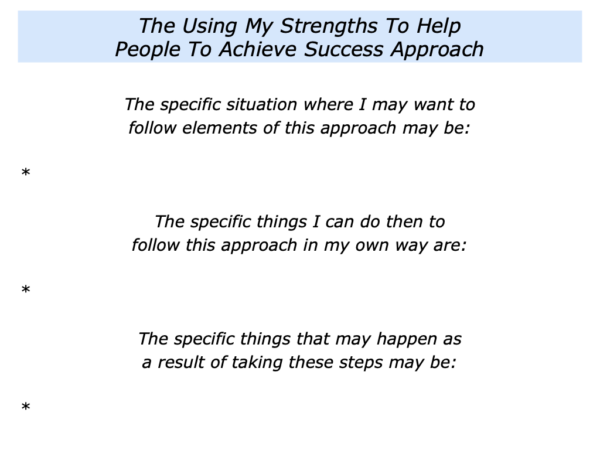






Leave a Reply